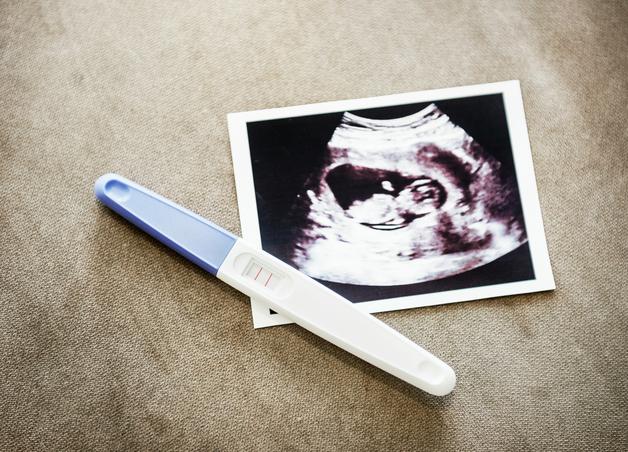Approaching the final stretch of pregnancy, a whirlwind of questions, minor anxieties, and the excitement of soon meeting your baby weaves itself into everyday life. Many parents find themselves pacing the living room at 3 AM, wondering if that odd twinge actually means something big is happening, or just the routine urge to visit the bathroom yet again. The tension mounts as the days pass, fuelled by old wives’ tales, stories from family members, and the relentless bombardment of advice. At the heart of these worries sits one burning puzzle — how to recognise the signs of imminent labor, and how not to mistake a false alarm for the real deal. Tuning into your body, understanding the science behind these changes, discussing which symptoms matter most, and being ready to respond forms the real toolkit for this grand transition. As labour’s curtain call nears, what should parents watch for, and how best to prepare amid the unpredictability? From physical discomforts to the famous “nesting” urge, clarity is within reach.
Key Physical and Emotional Signs of Imminent Labor
When discussing the signs of imminent labor, the mind races between textbook symptoms and individual sensations. Contractions, yes, but which ones count? The classic gush of amniotic fluid, maybe just a trickle? Or is it the barely-there “bloody show” that signals the cervix is softening? While labour’s arrival never follows a single script, certain markers are widely recognised:
- Regular, strong uterine contractions steadily grow in strength and frequency. Unlike the sporadic twitches of Braxton Hicks (those ‘practice’ contractions), true labor is defined by waves that refuse to back down, coming closer together and enduring, no matter how much you rest or hydrate.
- Amniotic sac rupture—whether an unmistakable burst or a gentle, persistent leak of clear, warm fluid (and occasionally with a slight pink tint). The true difference from urine or other discharge: there’s generally no control and no odour.
- Bloody show or mucus plug loss can resemble a gel-like vaginal discharge streaked with blood. This often heralds cervical changes beneath the surface.
- Cervical dilation and effacement, technical yet vital. Effacement is the thinning of the cervix, while dilation measures the opening in centimetres—progress monitored by your practitioner, rather than at home.
- Heaviness or pressure in the pelvis, paired with a new kind of lower back pain or cramps that refuse to go away.
- Increased vaginal discharge, sometimes stickier or heavier, is nature’s sign that the cervix is preparing.
- Digestive upsets and urinary frequency are more than just annoyances—the body “clears out” as prostaglandins rise, possibly resulting in mild diarrhoea or nausea before the onset of labor.
Ever noticed a sudden burst of frantic energy, as if sleep was optional and every kitchen drawer required sorting? Or perhaps the exact opposite: overwhelming fatigue as the body quietly redirects energy for the road ahead. Both reflect hormonal cascades unique to these final days.
Medical insight: Irregular, mild contractions that fizzle out are common in early labour. True labor means contractions every 3–5 minutes, each lasting 45–60 seconds, with increasing cervical change—not just discomfort.
The Nesting Instinct and Energy Swings: Emotional Clues
As the due date creeps near, many parents recount feeling compelled to ‘fix everything’—from aligning cushions perfectly to rewriting the birthing playlist. This nesting instinct is more than whimsy: hormones like oxytocin and prolactin surge, influencing both emotional and physical readiness. Some experience a manic quest for perfection, others find themselves craving rest and reflection. Both are entirely normal—your body’s way of adjusting for the impending transformation.
Baby’s Descent: Pelvic Lightening and New Sensations
A classic, sometimes subtle sign of imminent labor is when the baby “drops” into the pelvis—a process called “lightening.” It’s not simply folklore. As the baby settles, you might breathe more freely, but at the cost of intensified pelvic pressure and more urgent toilet visits. The signs? An obvious shift in belly shape, walking with a gentle waddle, or sudden stabs of pelvic discomfort becoming daily companions. For some, this phenomenon takes place weeks before birth, for others, it barely registers until contractions begin.
Digestive Changes and “Body Preparation”
With labor on the horizon, the digestive system gets a nudge. Hormonal mediators such as prostaglandins play a role, accelerating bowel movements—hence the pre-labour run to the restroom, sometimes accompanied by loose stools or a flutter of nausea. While inconvenient, these are, in fact, one of the signs of imminent labor, acting as nature’s way of making room for the uterus and the descending baby.
Backaches, Cramps, and Physical Discomfort
The hormone relaxin quietly works on your pelvis, softening ligaments for childbirth. This has consequences: chronic, low-level back pain may give way to sharper, radiating aches. Pelvic cramps, increased leg discomfort, and an inability to find a comfortable position—these are not merely ‘late pregnancy woes,’ but may be the body’s engineered cues that labor isn’t far away.
Rest can sometimes alleviate these aches, but if pain is deep, rhythmic, and persists despite position changes, this may be the body’s countdown.
Sleep Disruption and Restlessness: The Final Weeks
Counting sheep? Or perhaps, just counting the minutes till dawn? Sleep interruptions, vivid dreams, and general restlessness define these last days. Adrenaline and changes in progesterone levels jolt the usual sleep cycle, intertwining anticipation with real physical discomforts. Parents may oscillate between hope for a peaceful night and, paradoxically, viewing each awakening as a dress rehearsal for the coming nights with the newborn.
Minor Weight Loss: Normal Variation
Ever stepped on the scale a week before the due date and wondered at a slight dip—maybe a kilo, maybe two? This isn’t cause for worry. As fluid retention shifts and prostaglandins clear the bowels, the loss is usually physiological. Unless accompanied by fever or pain, it’s a classic sign of imminent labor—the body literally getting lighter for childbirth’s demands.
False Versus True Labor: Making Sense of Contractions
Braxton Hicks can “fake” the first act. These are sporadic, gentle squeezes—practice sessions for the main event. True labor contractions are different: they grow regular, intensifying with each wave, until resting, showering, or rehydrating no longer bring relief. When contractions clock in every 5–7 minutes, last longer than an hour, and force you to pause daily activities, it’s time to pack your bags.
A tip for keeping score: the “5-1-1 rule”—contractions every 5 minutes, lasting 1 minute each, continuing for over an hour. A contraction timer app, or even a humble notebook, helps track the pattern, avoiding unnecessary hospital runs or delays.
Amniotic Sac Rupture: Recognizing and Reacting
The legendary “water breaking” moment hovers in the minds of parents, accompanied by dramatic movie scenes. Yet, it’s less theatrical for most—sometimes a modest trickle, other times a bold gush. Key markers: clear, warm fluid with minimal odour, unaffected by movement. Should the fluid turn greenish, brownish, or emit a strong scent, it suggests the presence of meconium or possible infection—this demands prompt medical evaluation.
Following a rupture, timely admission to the birthing facility is advised for safety’s sake, irrespective of the status of contractions.
Cervical Progression
Medical terms like effacement (thinning), softening, and dilation (opening of the cervix, up to 10 cm) mark the invisible side of labor’s approach. Only skilled hands—usually your OB/GYN or midwife—can ascertain these developments. Both gradual and swift changes are possible, influenced by the body’s responsiveness and the baby’s position.
Additional Warning Signs and When to Call for Help
Certain alarms should never be dismissed. Heavy bleeding (beyond spotting or blood-stained discharge), persistent severe pain, decreased or stopped foetal movements, or any foul-smelling vaginal discharge call for immediate contact with your healthcare team. These are not the usual signs of imminent labor, but rather, possible markers of underlying complications.
Labor prior to 37 weeks (preterm) also warrants fast intervention to ensure maternal and infant safety.
Separating Myths from Reality
A handful of widely circulated misconceptions cloud the landscape. The classic belief that labour always begins with water breaking? Only 10–15% experience this as the opening salvo. Some still hope for an exact prediction via apps or gadgets, yet labor onset remains delightfully unpredictable. Not every parent will organise cupboards in a frenzy, and “false labor” can occasionally slip past even the seasoned—reaching out for advice is always wise.
Traditional Methods and Natural Approaches
There’s a spectrum of strategies thought to gently coax the body toward labor: short walks, certain stretching exercises, or, occasionally, stimulation of the nipples—all requiring a prior nod from your practitioner. Eating dates, sipping raspberry leaf tea, and trying acupuncture or homeopathic remedies are singled out in family stories, but each carries its own debate among professionals. Always follow medical counsel before trying any such approach, as even harmless-seeming remedies can have unintended effects.
Final Preparation: Essentials for the Last Sprint
- Packing essentials: Include documents, comfortable clothes, snacks, phone charger, and items for baby.
- Discussing your birth plan: Flexibility remains the keyword.
- Arranging reliable transportation.
- Confirming support system and emergency contacts.
- Tracking contractions—eliminating guesswork and stress wherever possible.
Above all, pace yourself. Snatch moments of rest, delegate wherever possible, and acknowledge that these days are as much about waiting as about action.
Key Takeaways
- Symptoms most likely to signal labor’s approach include regular contractions, the loss of the mucus plug, water breaking, and distinctive changes in pelvic pressure or digestive patterns.
- Sleep changes, emotional swings, and minor weight fluctuations are intertwined with the hormonal dance preceding birth.
- The signs of imminent labor can unfold gradually or erupt suddenly; every pregnancy tells its own story.
- For any sign outside the expected (heavy bleeding, absence of baby movement, infection symptoms), seek help without delay.
- Emotional readiness, clear information, and support from professionals go hand in hand for a confident transition to parenthood.
- Download the application Heloa for tailored advice and free health checklists for your child, making the journey smoother for informed, empowered choices.
Questions Parents Ask
How reliable are mobile apps and home tools in predicting labor?
While appealing, labor prediction gadgets are limited—they help track contractions but cannot confirm the precise onset of labor. Every experience is different; intuition plus professional guidance remains best.
Is high stress capable of delaying labor?
Common anxieties at term rarely stop labor in its tracks. Extreme, long-standing stress may influence hormonal levels, but labor’s timing is shaped by complex, multi-layered factors. Relaxation, open dialogue, and trusted support are valuable.
Could early labor symptoms be mistaken for unrelated conditions?
Absolutely. Back pain, digestive changes, mild cramping—all share territory with less remarkable late pregnancy issues. If any symptom feels pronounced, unsettling, or escalates, reaching out to a practitioner is wise—better safe than endlessly uncertain.
Further reading:









